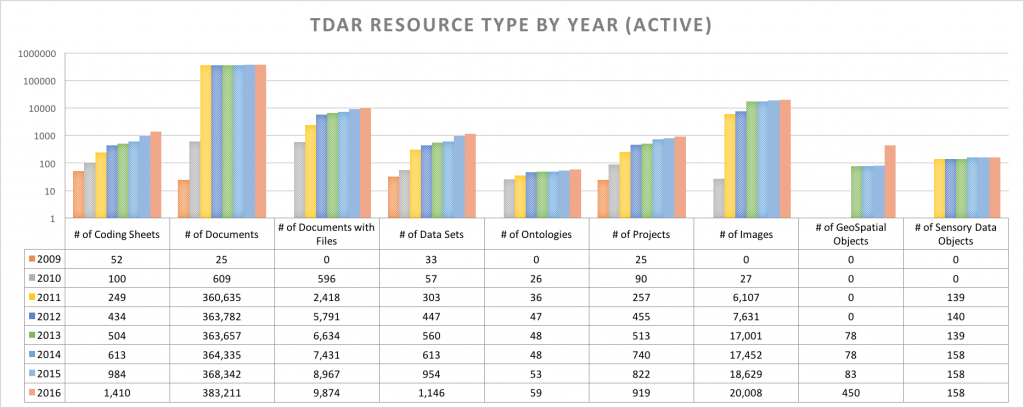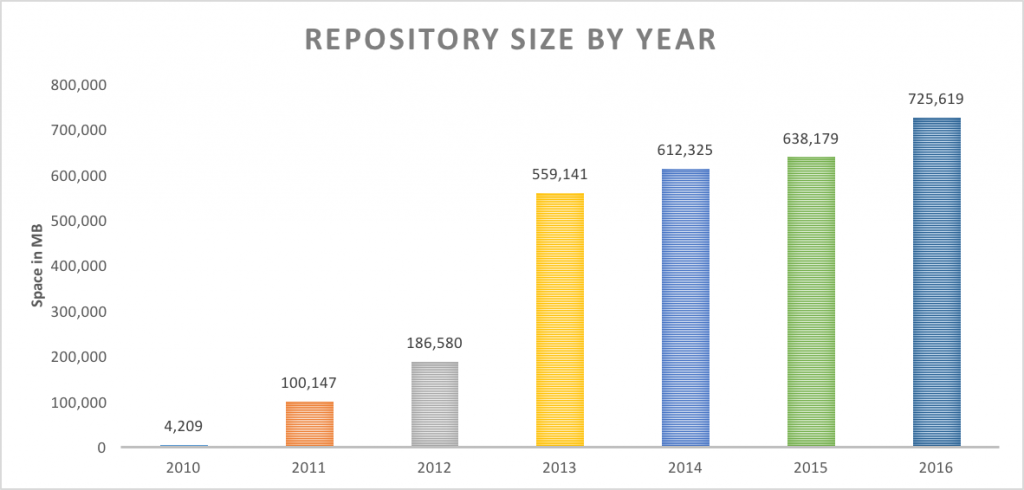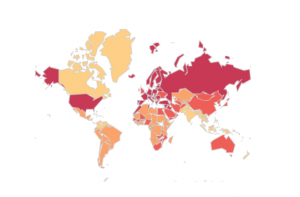This post was written by guest author: Sarah Neusius, Department of Anthropology, Indiana University of Pennsylvania (IUP)
My main project this summer is working with other zooarchaeologists who are part of the Eastern Archaic Faunal Working Group (EAFWG). With funding from the National Science Foundation (BCS1430754), we are preserving and integrating more than 50 Archaic Period (ca. 10,000 – 3,000 BP) faunal datasets and associated documents in tDAR (the Digital Archaeological Record).
Once the EAFWG has completed the uploading of the dataset files and created the metadata for them, these datasets will be publicly accessible for students and other researchers in the EAFWG collection within tDAR. These datasets were generated over the last sixty or more years by archaeologists working on sites located in the interior parts of Eastern North America. Because of a strong interest among archaeologists in human-environment interactions during the Archaic period the recovery and analysis of animal bones and other remains is a standard excavation procedure. This tradition of emphasizing zooarchaeological analysis continues today among Midwestern and Southeastern archaeologists interested in all of the PreColumbian periods. Good preservation has meant that large amounts of animal bone as well as mussel and snail shell often are recovered and significant faunal datasets have been generated for this region. Some of the better known of these sites are emblematic of the Eastern Archaic including Modoc Rock Shelter and the Koster site in Illinois, the Green River shell middens, such as Carlston Annis in Kentucky, and Dust Cave in Northern Alabama, but there are many other Archaic sites as well. Some of these datasets were recorded exclusively on paper, and some of the earliest digital faunal datasets were also created as a result of these excavations. Moreover archaeologists in this region continue to generate significant faunal data today. Unfortunately, these data have remained dispersed across a wide variety of institutions and are inaccessible to the larger archaeological community because they were recorded in a variety of formats and curated by individual researchers, some of whom are now deceased or no longer actively involved in Archaic period scholarship.
The EAFWG includes zooarchaeologists from IUP, the Illinois State Museum, the University of Kentucky, Florida State University, the Illinois Archaeological Survey, State University of New York at Oneonta and the University of Michigan at Flint. Besides meeting at professional conferences and staying in touch through email and conference calls, we have held formal workshops related to the project.
Our goal is to use tDAR to make accessible, as well as to preserve, significant Archaic period faunal datasets. Specifically, we want to spur comparative studies between and among the datasets from different sites in order to enhance and expand research into the Archaic period in Eastern North America. Traditional explanations for Archaic period variability and change have regarded environment and demography as causal. Unsurprisingly, such explanations are questioned by contemporary researchers, who argue that cultural identities, sociopolitical interactions, and ritual practices also explain some Archaic phenomena. In essence today’s archaeologists seek to understand Archaic period hunter-gatherers as more than participants in the ecosystem, and this raises new questions about the way Archaic data has been interpreted over the last half century or more. We think zooarchaeological data has much to contribute to these debates. Ultimately we have some macrolevel questions about the variable use of aquatic resources by people who lived in this area during the Archaic period, which we believe will contribute meaningfully to better understanding of the Archaic period. Work on these topics by members of the EAFWG continues.
Over the past year and through this summer I have been involved with myriad details, most of which would be far too boring for a blog such as this. However, I hope you can see why there are many steps in the EAFWG project. These have been accomplished with the help of several IUP undergraduate students and graduate students, and have included: (1) creating digital databases from paper records in the first place; (2) finding and removing errors from digital datasets; (3) uploading digital datasets to tDAR; (4) providing metadata about what is in each dataset and what variables it contains; and, (5) creating the means of comparing datasets using tDAR ontologies.
We are exploring how comparable our Archaic datasets are in terms of taphonomy and contexts sampled, and working on measuring environmental and demographic variation during the Archaic period. By the end of the summer, we hope to begin to consider our research questions concerning the use of aquatic animals more directly.
For me personally, this summer project has provided few chances to be outside as much as I would prefer or to develop the muscles and fieldwork tan that I often do. Regardless, the Archaic period was my first love in North American Archaeology. This project is an opportunity to revisit my dissertation research on the Koster site, which is pretty enjoyable and exciting for me. Both collaboration with other zooarchaeologists, and looking at data I know well with new perspectives is a lot of fun. So if you encounter me this summer and find me slightly glassy eyed from staring at the computer screen, rest assured that I’m still absorbed in archaeology!


